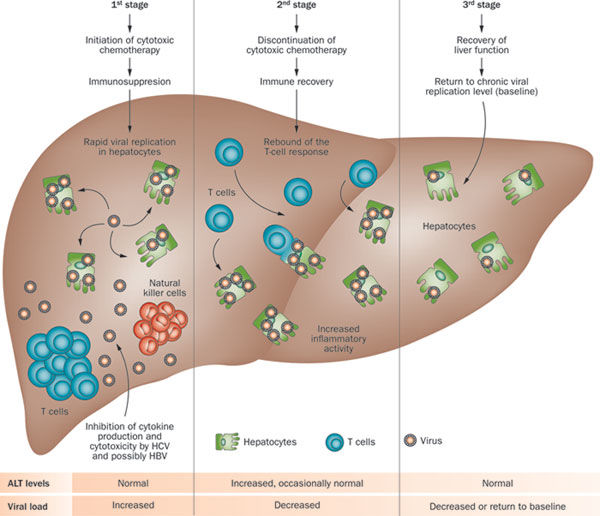Lee J1,2, Park JY3,4, Huh KH1,2,5, Kim BS4,5,6, Kim MS1,2,5, Kim SI1,2,5, Ahn SH3,4, Kim YS1,2,5.
Summary
Hepatitis B virus (HBV) reactivation is a known complication of immunosuppressive therapy. Although rituximab is increasingly used for desensitization in ABO-incompatible positive cross-renal transplants, the risk of HBV reactivation in hepatitis B surface antigen (HbsAg)-negative/hepatitis B antibody (anti HBc)-positive kidney transplant patients receiving rituximab has not been fully studied.
Methods
We analyzed 172 HBV patients who received a living donor kidney transplant between 2008 and 2014. Patients were divided into rituximab (n=49) and control (n=123) groups. All patients were observed for HBV reactivation, defined as reappearance of hepatitis B surface antigen or HBV DNA.
Results
During the observation period (average period 58 months, total 4-95 months), HBV reactivation was observed in 5 patients (10.2%) in the rituximab group and in two patients (1.6%) in the control group (P= 0.003). In the rituximab group, two patients developed severe HBV-related hepatitis, and one patient died of liver failure. The average time from rituximab desensitization to HBV reactivation was 11 months (range 5-22 months). On the contrary, no patient in the control group experienced severe hepatitis. Hepatitis B surface antibody status was similar between groups. Rituximab desensitization [ hazard ratio, 9.18; 95% confidence interval, 1.74–48.86; P= 0.009] and hepatitis B surface antibody status (4.74; 95% confidence interval, 1.05- 21.23, P=0.04) were sufficient risk factors for HBV reactivation.
Final result
Rituximab desensitization for incompatible kidney transplants significantly increased the risk of HBV reactivation in HbsAg-negative/anti-HBc-positive patients. Therefore, closed monitoring of HBV DNA is required in these patients.

